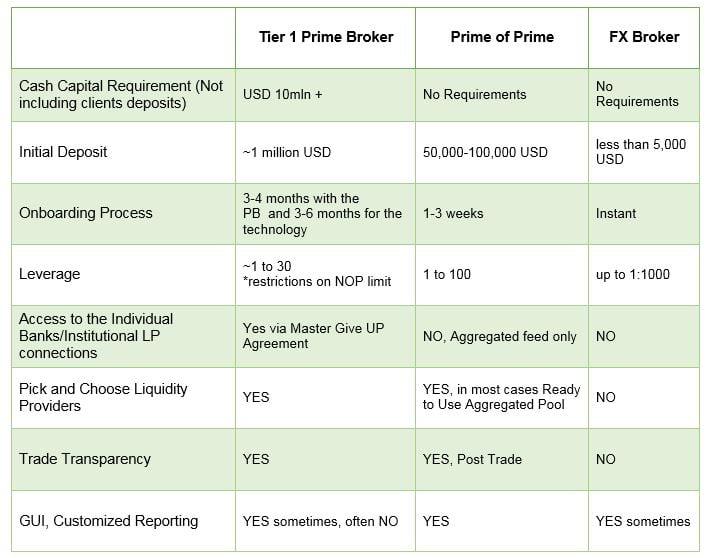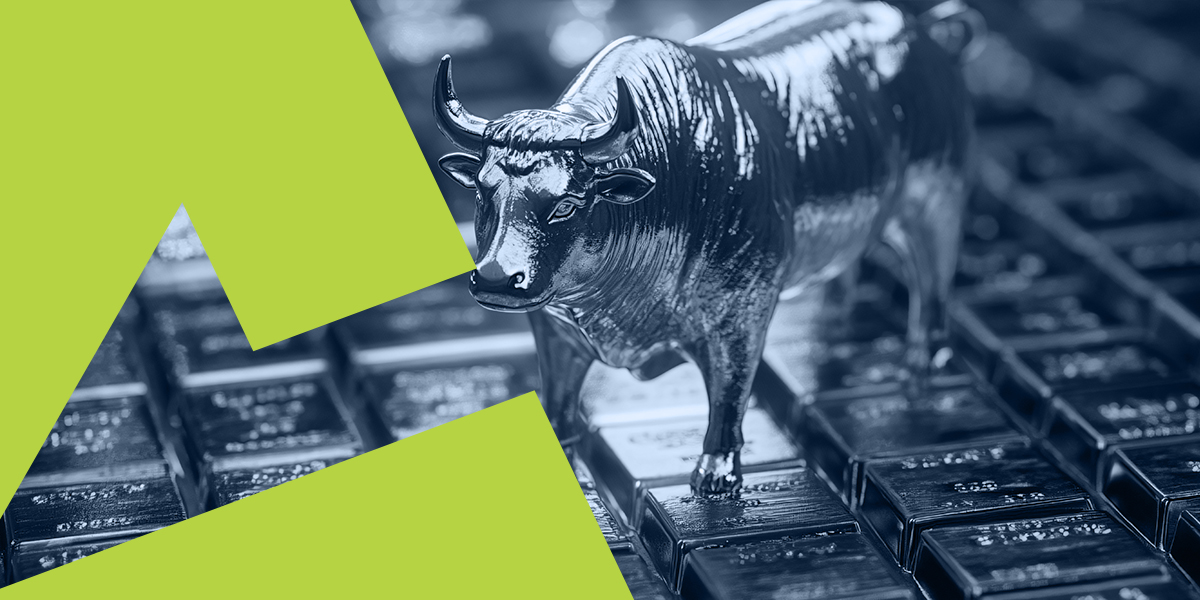As a VP of sales, I have noticed that during many of my conversations lately I am helping brokers and fund managers identify the most appropriate trading venue to serve the needs of their respective businesses. This has become a very hot topic after the January 2015 Swiss event as the major Tier 1 Prime Brokerages have raised capital requirements, introduced tighter onboarding processes and, in many cases, revised their pricing models in order to mitigate the risks associated with FX prime brokerage.
In order to help ease the process of selecting the right partner I will briefly describe the 3 most popular options available for retail FX brokers, asset managers and corporates and point out each of their pros and cons.
Prime Brokers
On the first and highest level we have the Tier 1 Prime Brokers. Typically, this segment is represented by the prime brokerage arms of major FX banks. All of the major FX banks have (or had) some degree of FX Prime Brokerage presence.
An FX prime brokerage allows its clients to trade with banking institutions using the prime broker’s credit relationships and infrastructure. Clients sign a single legal agreement with the Tier 1 Prime Broker, eliminating the necessity to execute multiple legal and credit documents with each of their trading banks as well as the requirement to settle transactions with multiple counterparties.
Significant cash capital (not including clients’ assets) is no longer the only main requirements to be able to establish an account with a Tier 1 PB. Nowadays these prime brokers are being extremely selective with whom they enter a relationship and use a variety of factors to determine eligibility such as:
- Stability of the business;
- History of the company (referrals from old LPs, client reviews, open legal complaints, overall reputation);
- Profitability of the client (how much trading volume will be sent to the PB on a monthly basis);
- Who are the end clients (retail FX brokers are considered a high-risk liability business as they offer as much as 1:500 leverage)
Additionally a prospective client will be required to furnish audited financial statements, pass extensive due diligence and anti-money laundering reviews along with a plethora of other requirements
The onboarding process for a Tier 1 Prime Brokerage is very technology intensive as now the brokerage is the one who needs to get an aggregation technology, connect to liquidity venues, connect to a trade give up network (like Traiana Harmony) and much more. The whole onboarding process, not including the legal review and account opening documentation process may range between 2-6 months.
It is also generally accepted to have at least two Tier 1 PBs, one typically serving as a backup.
Prime of Prime
The next level is Tier 2, or more widely known as “Prime of Prime”- in this scenario a Brokerage has an account with a Tier 1 Prime Broker and extends those services to other market participants such as retail FX brokerages, FX funds and other institutional players. Prime of Primes are bridging the gap between the institutional and retail FX markets by offering faster onboarding processes, access to interbank liquidity and the latest in technology advances all bundled into a single offering.
Prime of Primes will generally offer higher leverage than a Tier 1 PB as well as plug and play integration into a single aggregated feed via industry-standard FIX API or standard adaptors/connectors to other platforms (i.e. an MT4 bridge).
In order to mitigate reputational and transactional risk, true Prime of Primes will typically not work directly with retail fx clients unless PoP services are a part of its overall business. They will also have higher account opening standards, more in-depth due diligence as compared to a retail FX broker and higher deposit requirements.
FX Brokerage
The third level is where an FX brokerage may act as an option for a trading venue.
If an FX Brokerage is large enough, they are able to secure a Tier 1 Prime Brokerage relationship and use the setup to cover 100% of their flow (100% STP model), hedge portions of its challenging flow in a back-to-back fashion (a hybrid business model), or utilize it to get prices for hedging some of the exhaust flow from its dealing desk operation.
However, you will find very few brokerages of this kind. Most FX Brokers use the services of the Prime of Prime(s) to gain access to liquidity and use the setup in one of the three ways described above.
FX Brokerages then extend their services to groups like retail traders, retail money managers and white label partners.
FX Brokerages will offer the lowest barriers to entry with small deposit requirements and generous leverages (at times 1000:1), However, as these institutions typically operate very cash-intensive business and in many cases serve as a second in line intermediary between a bank and a trader, fees are add up.
Often large Hedge Funds or Investment Groups will go directly to a Prime of Prime or Tier 1 PB in order to get one step closer to the source of interbank liquidity.
“Quasi” Prime of Primes
This article would not be complete if I didn’t mention “quasi” prime of primes that are mushrooming in FX market lately. These firms provide “profit sharing programs” and other incentive programs to attract relationships. These are not Prime of Primes that send transactions to the market and serve as facilitators between banks and clients, but retail non-bank market makers. FX Brokers send flow to these “quasi” prime of primes and if the trading activity is profitable for them (usually, in cases where retail traders lose their deposits), profits are typically being split between the brokerage and introducer.
The Comparison Table summarizes the differences between each category

Are you looking for a Prime of Prime?
If you are looking for a reliable Prime of Prime, I challenge you to find the one that
- has a Tier 1 PB relationship;
- offers post-trade transparency: granular execution reports with timestamps and fill rates;
- has solid technology to aggregate and for you to manage risk;
- works with bank liquidity only;
- offers as much as 1:100 leverage;
- offers ~100% execution ratio;
- does not work with the retail fx clients.







